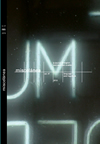Power and Virtue in Elkanah Settle's Ibrahim
DOI:
https://doi.org/10.26754/ojs_misc/mj.20138833Palabras clave:
Teatro, Restauración, Oriente, Elkanah, Settle, IbrahimResumen
A lo largo del período Medieval y Renacentista, los escritos orientales sirvieron para respaldar las opiniones negativas sobre la gente, y en particular los líderes, de la región. Se podría haber esperado que los significativos cambios sociales, políticos y religiosos que fueron provocados por las guerras civiles y la Ilustración hubiesen cambiado esta tendencia. Sin embargo, durante la Restauración y el siglo dieciocho se siguieron presentando aspectos poco halagadores de la vida en el Oriente Medio, tal y como la entendían los escritores occidentales. Hay un escritor que destaca entre los dramaturgos y autores de la época. Al contrario que sus contemporáneos, Elkanah Settle extiende el impacto de la atmosfera principalmente positiva más allá de las orillas del Reino Unido y lo proyecta en el Oriente. En su obra de teatro, Settle presenta un dirigente oriental que muestra verdadero mérito en su persona, en vez de las características despóticas y dictatoriales habituales en otras obras del género. El dirigente, Solyman, posee un nivel de virtud que hace que tanto los miembros de su familia como sus súbditos le admiren y se atrevan a criticarlo, incluso a reprenderle, cuando se aleja del camino de honor y virtud. Solyman tiene la suficiente sabiduría como para buscar consejo, aceptar las críticas, admitir su debilidad y tratar de reparar el daño que ha causado a otros con su imprudencia. Estas son habilidades raras entre los dirigentes retratados en las obras orientales de la época. El propósito de este artículo es por lo tanto confirmar como Settle, como escritor de un género específico en un momento específico en la historia, difiere en gran medida de sus contemporáneos, mostrando aparentemente un cara de la vida en Oriente mucho más positivaDescargas
Referencias
Aravamudan, Srinivas. 2012. Enlightenment Orientalism: Resisting the Rise of the Novel. Chicago: The University of Chicago Press.
Brown, Laura. 1982. “The Defenseless Woman and the Development of English Tragedy”. Studies in English Literature 22 (3): 429-44.
—. 1993. Ends of Empire: Women and Ideology in Early Eighteenth-Century English Literature. London: Cornell U.P.
Browne, Alice. 1987. The Eighteenth Century Feminist Mind. Detroit: Wayne State U.P.
Choudhury, Mita. 2000. Interculturalism and Resistance in the London Theater, 1660-1800: Identity, Performance, Empire. London: Bucknell U.P.
Cowley, Hannah. 1792. A Day in Turkey; Or, The Russian Slaves. Dublin: Printed for Wogan, Byrne, Grueber et al.
Davenant, William. 1964. “The Siege of Rhodes”. The Dramatic Works of Sir William Davenant. Vol. 3. New York: Russel & Russel Inc.: 259-365.
De Krey, Gary S. 2001. “Radicals, Reformers, and Republicans: Academic Language and Political Discourse in Restoration London”. In Houston, A. and S. Pincus (eds.) A Nation Transformed: England after the Restoration. Cambridge: Cambridge U.P.: 71-99.
Dibdin, Mr. 1800. The Complete History of the Stage. Vol. 4. London: printed for the author and sold at his warehouse.
Evans, James E. 1996. “Resisting a Private Tyranny in Two Humane Comedies”. In Quinsey, K. M. (ed.) Broken Boundaries: Women and Feminism in Restoration Drama. Kentucky: The University Press of Kentucky.
Hughes, Derek. 2005. “Rape on Restoration Stage”. Eighteenth Century: Theory and Interpretation. 46 (3): 225–236.
Johnson, Samuel. 1964. “Irene”. In Mac Adam, E.L. (ed.) Samuel Johnson: Poems. The Yale Edition of the Works of Samuel Johnson. Vol. 6. Yale University Press: 109-218.
Marsden, Jean I. 1996. “Rape, Voyeurism, and the Restoration Stage”. In Quinsey, K. M. (ed.) Broken Boundaries: Women and Feminism in Restoration Drama. Kentucky: The University Press of Kentucky: 185-200.
Marshall, Geoffrey. 1975. Restoration Serious Drama. Norman: University of Oklahoma Press.
Pincus, Steve. 2001. “From Holy Cause to Economic Interest: The Study of Population and the Invention of the State”. In Houston, A. and S. Pincus (eds.) A Nation Transformed: England after the Restoration. Cambridge: Cambridge U.P.: 272-298.
Pitchard, Will. 2000. “Masks and Faces: Female Legibility in Restoration Era”. Eighteenth Century Life 24 (3): 31-55.
Pix, Mary. 1696. Ibrahim, The Thirteenth Emperour of the Turks. London: Printed for John Harding.
Said, Edward. 1979. Orientalism. New York: Vintage Books.
Scodel, Joshua. 2001. “The Cowleyan Pindaric Ode and Sublime Diversions”. In Houston, A. and S. Pincus (eds.) A Nation Transformed: England after the Restoration. Cambridge: Cambridge U.P.: 180-210.
Settle, Elkanah. 1694. Ibrahim, The Illustrious Bassa. London: Printed for Tho. Chapman.
Sharpe, Kevin. 2007. “‘Thy Longing Country’s Darling and Desire’: Aesthetics, Sex, and Politics in the England of Charles II”. In Alexander, J. M. and C. MacLeod, (eds.) Politics, Transgression, and Representation at the Court of Charles II. New Haven: The Yale Center for British Art: 1-32.
Staves, Susan. 1979. Players’ Scepters. Nebraska: University of Nebraska Press.
Southerne, Thomas. 1988. “The Loyal Brother, Or the Persian Prince”. The Works of Thomas Southerne. Vol.1. Oxford: Clarendon Press: 11-73.
Trapp, Joseph. 1735. Abra-Mule, Or Love and Empire. London: Printed for Jacob Tonson in the Strand.
Turner, James G. 2002. Libertines and Radicals in Early Modern London: Sexuality, Politics, and Literary Culture, 1630-1685. Cambridge: Cambridge U.P.
Weil, Rachel. 2001. “The Family in the Exclusion Crisis: Locke versus Filmer Revisted”. In Houston, A. and S. Pincus (eds.) A Nation Transformed: England after the Restoration. Cambridge: Cambridge U.P.: 100-124.
Wordon, Blair. 2001. “The Question of Secularization”. In Houston, A. and S. Pincus (eds.) A Nation Transformed: England after the Restoration. Cambridge: Cambridge U.P.: 20-40.
Descargas
Publicado
Número
Sección
Licencia

Esta obra está bajo una licencia internacional Creative Commons Atribución-NoComercial 4.0.


